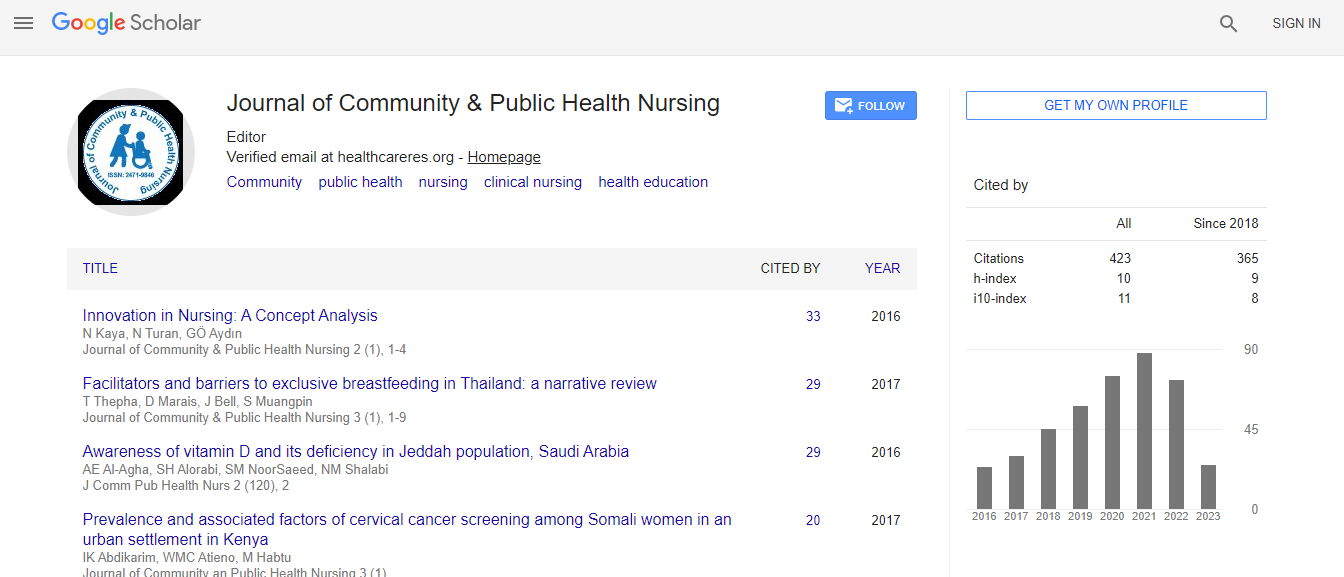Research Article
Prevalence and Associated Factors of Cervical Cancer Screening among Somali Women in an Urban Settlement in Kenya
Issa Kadija Abdikarim1, Wagoro Miriam Carole Atieno2and Michael Habtu3*1School of Nursing Sciences, University of Nairobi, P.O. Box 19676-00202 Nairobi, Kenya
2College of Health Sciences, School of Nursing Sciences, University of Nairobi, P.O. Box 19676-00202 Nairobi, Kenya
3Department of Public Health, School of Health Sciences, Mount Kenya University, P.O. Box 5826, Kigali Campus, Rwanda
- *Corresponding Author:
- Michael Habtu
MPH, Department of Public Health
School of Health Sciences, Mount Kenya University
P.O. Box 5826, Kigali Campus, Rwanda
Tel: 250784460645
E-mail: mikel.habtu@gmail.com
Received date: January 03, 2017; Accepted date: February 10, 2017; Published date: February 17, 2017
Citation: Abdikarim IK, Atieno WMC, Habtu M (2017) Prevalence and Associated Factors of Cervical Cancer Screening among Somali Women in an Urban Settlement in Kenya. J Comm Pub Health Nursing 3:159. doi:10.4172/2471-9846.1000159
Copyright: © 2017 Abdikarim IK, et al. This is an open-access article distributed under the terms of the Creative Commons Attribution License, which permits unrestricted use, distribution, and reproduction in any medium, provided the original author and source are credited.
Abstract
Background: In Kenya, cervical cancer is ranked as the most frequent cancer among women with about 4,802 new cases being diagnosed and approximately 2,451 lives lost to it. Screening by Pap smear facilitates early detection, prompt treatment and consequently reduces mortality from cervical cancer. Though cervical screening services exist in Kenya, there is still high mortality rate due to cervical cancer.
Objective: To determine prevalence and associated factors of cervical cancer screening among Somali women in Eastleigh, Nairobi, Kenya.
Materials and methods: A cross-sectional study was conducted among 104 women selected by multi-stage sampling approach. The data was collected using pre-tested semi-structured questionnaire. Chi-square test (p<0.05) and odds ratio with corresponding 95% confidence interval were used to determine the association between screening and independent variables. Multivariate analysis was performed to determine predictors of cervical cancer screening.
Conclusion: Based on our findings special emphasis should be directed at increasing awareness and perception about cervical screening as well as susceptibility of cervical cancer at all primary health care points through a welldesigned health education programme.

 Spanish
Spanish  Chinese
Chinese  Russian
Russian  German
German  French
French  Japanese
Japanese  Portuguese
Portuguese  Hindi
Hindi 
